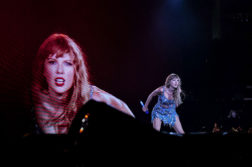For a lay person like me, familiar neither with pornography nor the work of Bill Henson, the current debate has been instructive. I have followed with interest as it ranged across definitional argument, questions of censorship, and moved finally to the rights and capacities of the child as subject: can a 13-year-old be adequately informed and sufficiently cognisant of consequences to consent to being photographed in revealed nakedness?
Here the debate largely has been cast, as it has throughout, in the form: "yes she can – no she can’t". And once sides have been taken there the debate stalls; we understand the unambiguous extremes, but are no clearer about how the question is to be resolved. At this point I would like to put one foot tentatively into the middle ground, and to suggest that "it depends…"
My starting point is the unremarkable claim that all children are not created equal in terms of capacity and experience.
My grandson is seven. For as long as the family can remember he has been interested and engaged in the collection of bits of the natural world: bugs, feathers, bones, shells, flowers, old bird nests. The detritus of nature.
Along the way his collecting behaviour has been refined. In part this has been managed by parents when it comes to the practical questions of number, size and smell; and in part by Grandpa, a fellow collector. Over years we have had to traverse territory including the ethics of collecting the living and the dead, specimens of heritage value and those that may legitimately be taken, specimens which if removed would deprive other creatures of food or shelter, how many to reasonably collect keeping in mind the interests of others, and the economics of specimens purchased, specimens donated, specimens swapped and specimens found.
At seven he gets it. He is across these issues. He is able to articulate the practical, ethical, economic and political arguments, and to reach conclusions that are coherent, consistent, defensible and that do not always coincide with those of mentoring adults.
Just last weekend, while idly poking through a tray of oddments, he asked: "What do you notice about that shell, Grandpa?" "It looks in very good shape to me," I said, cautiously. "Well that’s what worries me," he said. "I think it was collected alive. And have a look at this one," he continued, displaying a fine specimen with long, fragile spines, still intact. "I think that must have been collected alive, too, to be in such good condition." And then, in answer to my unspoken question as to where all this was going: "I really regret buying these, now that I think they must have been collected alive," he concluded.
I checked with his parents. No one had said a word. These were his thoughts, his concerns, his conclusions.
So far, so good. But can my argument – that some kids "get it", even as young as seven, based on context, capacity, interest and experience, and some kids who lack that background just don’t – be extrapolated to the case of the un-named 13-year-old who posed for Bill Henson?
I know absolutely nothing about this girl, so let me hypothesise: she has grown up in an "artistic" family – ie adult members of the family are themselves artists, or have an overt appreciation of art and share that with their children. The family knows Bill Henson – he is a family friend – and wholeheartedly and openly approves of his work. On family holidays and at barbecues together they discuss all aspects of his artistry, including the controversial; and because they encourage mature intellectual exploration in their children, they too are engaged in these discussions in order that they may form and defend opinions about artistic things.
Some members of the family and mutual friends of all ages have posed for Bill Henson; and the children have asked (as children do): "what was it like?" especially when the subjects posed without clothes. Nakedness is treated with respect within this family. Nothing is hidden, neither by generation, nor age, nor gender. All are trusted with their bodies, implicitly. For them there never was another way.
The artist and the child, and the parents and others involved in the question of consent, given their (hypothesised) view of the body, have no case to answer. It is for the rest of us to cope. The Henson photographs are not a celebration nor expose of sex, but of the sexual body. And what else can a body be? Once accessed by the public these images may be turned by some to pornographic purpose, as are other images. But in themselves these photographs are the production of people whose understanding and appreciation of the body is one to which we would do well to aspire.
On the basis of this completely fabricated hypothetical family I think my argument can, with good reason, be extrapolated. Granted, there is a fair stretch between a seven-year-old’s understanding of the ethics of shell collecting, and the moral and psychological implications of being exposed, naked, to the public gaze. One does not lead, directly or indirectly, to the other. But both draw on similar principles: if the context and experience of the girl in question has imbued her with an understanding, an interest, a predisposition, an intuition, for the nature of the artistic endeavour; and if she can demonstrate this with a level of sophistication approaching that of her mentors, then yes, I say it’s fine.
I say leave it to the trustworthy adults, together with the child, to determine where the boundaries best lie.
Donate To New Matilda
New Matilda is a small, independent media outlet. We survive through reader contributions, and never losing a lawsuit. If you got something from this article, giving something back helps us to continue speaking truth to power. Every little bit counts.



